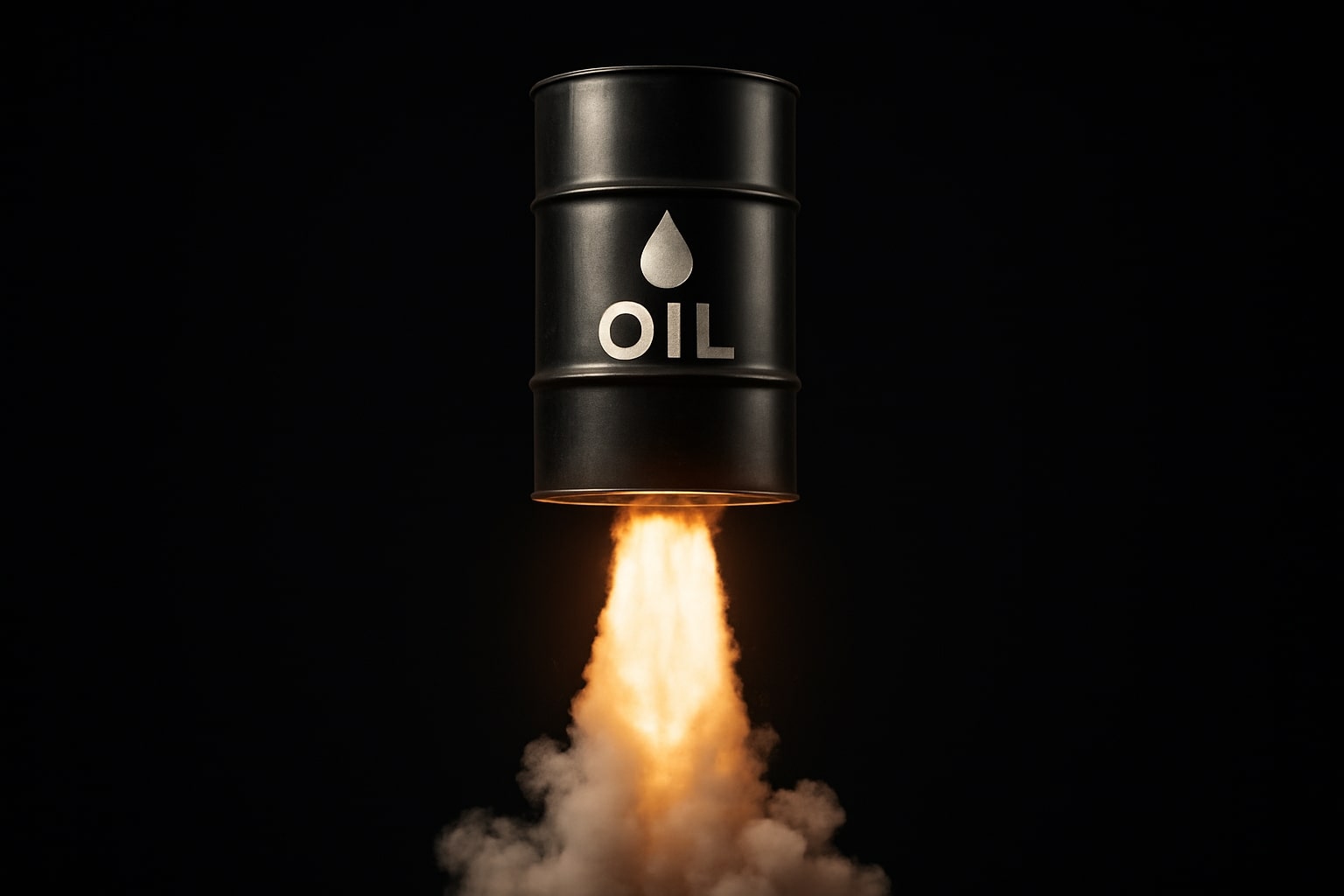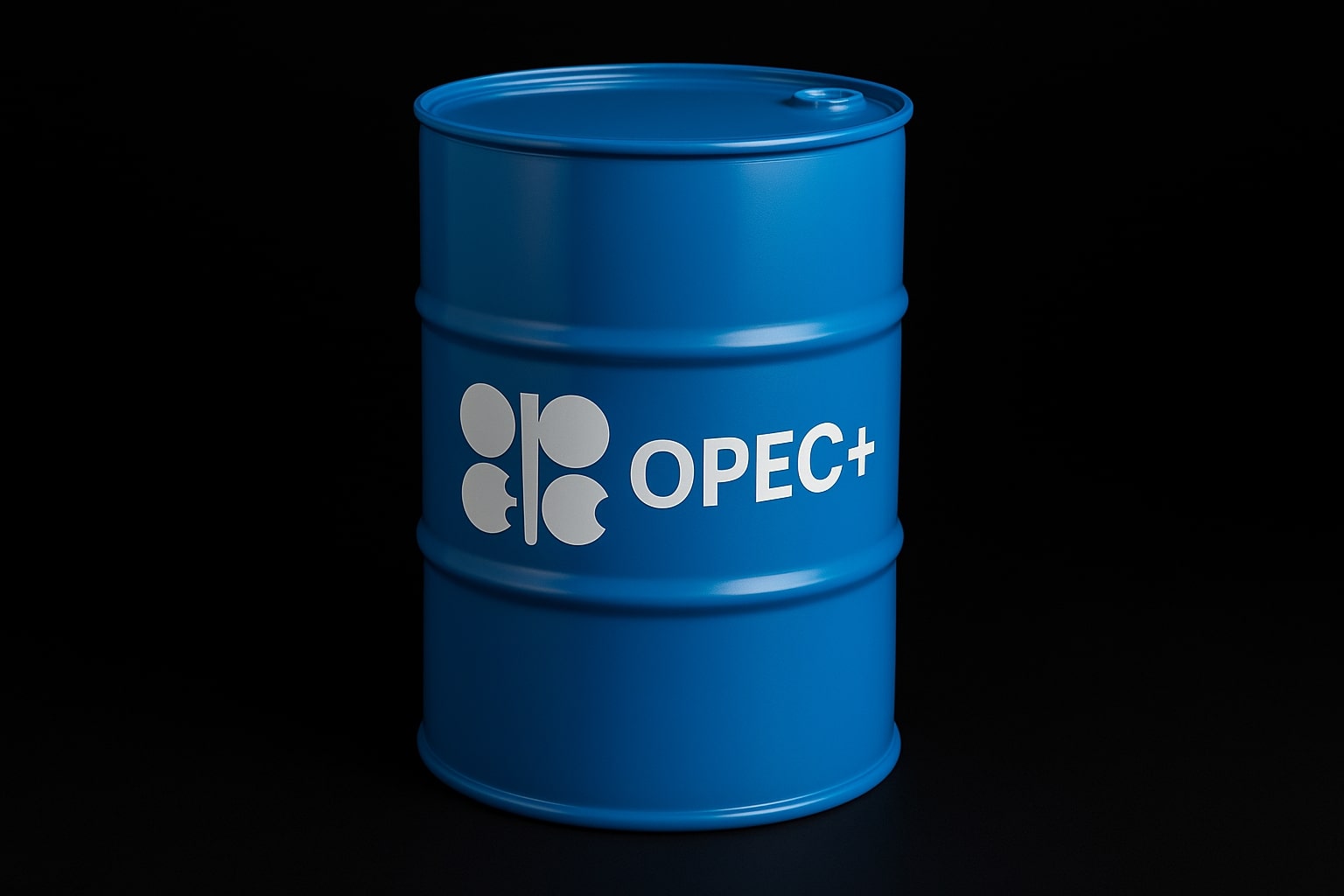
Oil Prices Rebound on Inventory Draws, Middle East Ceasefire, and Demand Surge
WTI Climbs to $65.47, Brent Nears $68 as Supply Tightens and Tariff Risks Loom | That's TradingNEWS
WTI Crude (CL=F) and Brent (BZ=F) React to Global Supply Shifts and Geopolitical Triggers
WTI and Brent Pricing Rebound Amid Tight U.S. Inventories
Oil markets saw a measured rebound this week, with WTI crude (CL=F) rising to $65.47 and Brent (BZ=F) settling near $68.00 as of Thursday afternoon. This recovery came after early-week losses and was driven by a sharper-than-expected drawdown in U.S. stockpiles. According to the Energy Information Administration, crude inventories fell by 5.8 million barrels, a stark contrast to analysts’ forecast of 797,000 barrels. Additionally, gasoline reserves dropped by 2.1 million barrels, signaling stronger domestic demand amid the U.S. summer driving season.
Dollar Weakness Amplifies Crude Demand
The surge in oil prices was further catalyzed by a sharp decline in the U.S. dollar index, which hit a three-year low. The greenback’s devaluation makes oil cheaper for foreign buyers, amplifying global demand. As U.S. President Trump signaled potential Federal Reserve leadership changes and hinted at rate cuts, speculative positioning grew around a weaker dollar environment, supporting risk assets including crude.
Geopolitical Volatility Anchors Short-Term Oil Risk Premium
The fragile ceasefire between Israel and Iran provided a temporary reprieve to the geopolitical premium embedded in oil. After spiking to $76 per barrel following U.S. strikes on Iranian nuclear facilities, Brent has retraced to $68, suggesting the market is cautiously optimistic about stability. Yet analysts remain wary. Citi strategists warn that Trump’s sensitivity to oil prices may suppress a lasting premium, even as conflict risk simmers.
Russian Urals Oil Trades Below G7 Sanctions Cap
While Brent prices stabilize, Russian Urals crude was priced at $55-56 per barrel FOB from the Baltic and Black Sea ports—well below the $60/barrel G7 cap. This opens a legal corridor for shipping and insurance services, providing relief to Russian sellers and alternative buyers. Stable discounts despite Brent fluctuations indicate that Urals oil continues to find demand in secondary markets. However, traders are closely watching for July loading schedules.
India and Indonesia Show Regional Demand Divergence
India's refinery throughput in May increased 0.4% YoY, reaching 5.47 million barrels per day, affirming its continued appetite despite fluctuating global prices. In contrast, Indonesia ramped up domestic production with a 30,000 bpd increase from the ExxonMobil-operated Cepu block, now producing 180,000 bpd, covering 25% of national output. The strategic pivot, with a 2024 target of 605,000 bpd, aims to reduce import dependency and stabilize internal markets.
China's Position on Iranian Oil Signals Soft Realignment
Amid easing tensions, China’s quiet resumption of Iranian oil imports was interpreted diplomatically as a willingness to engage, not escalate. China has consistently opposed sanctions under Trump, and now serves as a critical backdoor for Iranian barrels. This dynamic could mute Iran-related supply shocks unless conflict erupts again.
OPEC Basket Reflects Sluggish Sentiment
The OPEC reference basket fell by $0.72 to $67.99, reflecting the group’s reduced leverage in setting floor prices as non-OPEC supply surges. A more aggressive draw in U.S. inventories gave short-term reprieve, but the longer-term concern remains the lack of unified production discipline beyond verbal commitments.
Market Eyes Inflation Risk From Crude Spike and Tariffs
With U.S. tariffs rising from 3% to 15% in under six months, and oil prices rebounding 25% off May lows, economists forecast a spillover into CPI and PPI inflation data. A 20% shock in oil prices is estimated to lift CPI by 0.3%, excluding second-order effects on logistics and goods pricing. Should conflict in the Middle East reignite, crude could act as a political scapegoat for cost-of-living increases tied to tariff policy.
Technical Levels Signal Near-Term Resistance and Macro Inflection
WTI faces technical resistance at $66.75, where moving averages and trendlines converge. Brent must hold above $68.00 to confirm a breakout continuation. Failure to sustain these levels risks a retest of $63.50 (WTI) and $66.00 (Brent), while a bullish surge past $70.00 could reprice risk assets globally.
Verdict: Crude Oil (CL=F, BZ=F) Outlook Tilted Bullish but Fragile
Tight inventories, a weakening dollar, and returning demand give crude a bullish tilt, but geopolitical risks and macro uncertainty limit upside. The breakdown in Urals pricing adds nuance to Russian sanctions enforcement, while China and Indonesia offer diverging narratives on supply resilience. With technical resistance nearby and inflation risk rising, the recommendation on WTI and Brent is cautiously Bullish – Buy on Pullback, but with close monitoring of ceasefire stability and U.S. macro data.
That's TradingNEWS
Read More
-
BITQ ETF Soars 66.55% as Bitcoin Blasts Past $124,000 — Crypto Equities Lead 2025 Rally
13.10.2025 · TradingNEWS ArchiveStocks
-
XRP ETFs XRPR, XRPI Slip as Ripple XRP-USD Holds $2.62 — SEC Fast-Track Could Ignite $20B
13.10.2025 · TradingNEWS ArchiveCrypto
-
Natural Gas Price Forecast - NG=F Steadies at $3.00 as U.S. Export Boom Tests Old Fields
13.10.2025 · TradingNEWS ArchiveCommodities
-
USD/JPY Price Forecast - Dollar to Yen Climbs to ¥152.28 as Japan’s Political Shakeup
13.10.2025 · TradingNEWS ArchiveForex



















